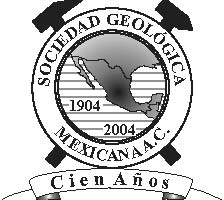|
BOLETÍN DE LA SOCIEDAD GEOLÓGICA MEXICANA TOMO LIX, NÚM:. 2, 2007, P. 203-217 http://dx.doi.org/10.18268/BSGM2007v59n2a5 |
|
Degradación ambiental en el valle Teotihuacan: evidencias geológicas y paleopedológicas
Ma. Yazmín Rivera-Uria1, Sergey Sedov2, Elizabeth Solleiro-Rebolledo2,*, Julia Pérez-Pérez3, Emily McClung4, Alfredo González1, Jorge Gama-Castro2
1Posgrado en Ciencias de la Tierra, Instituto de Geología, Universidad Nacional Autónoma de México, Ciudad Universitaria, 04510, México, D.F.
2Instituto de Geología, Universidad Nacional Autónoma de México, Ciudad Universitaria, 04510, México, D.F.
3Posgrado en Antropología, Instituto de Investigaciones Antropológicas, FFyL, Universidad Nacional Autónoma de México, Ciudad Universitaria, 04510, México, D.F.
4Instituto de Investigaciones Antropológicas, Universidad Nacional Autónoma de México, Ciudad Universitaria, 04510, México, D.F.
* This email address is being protected from spambots. You need JavaScript enabled to view it.
Abstract
The results of geoarchaeological research undertaken in the Teotihuacan Valley in order to establish the relationship between the distribution of settlements during different periods (Formative, Classic and Postclassic) and the dynamics of environmental degradation are presented. Two types of records were considered: profiles located in the alluvial soil sequences in the central part of the valley (Rio San Pablo and El Tular) and soil and soil-sedimentary profiles associated with pre-Hispanic occupations (Aztec occupation on Cerro San Lucas and Classic period fill from the Moon Pyramid). Settlement distributions during the periods under consideration were mapped and selected analyses of properties related to “soil memory” as well as radiocarbon dating of selected horizons were carried out. In addition, the results of stable carbon isotopes (δ13C) and available phosphorous (P) were compared. The results suggest that environmental deterioration was the result of erosion provoked by the ancient inhabitants of the city as a result of pressure on available space and resources. In the profiles located in the central part of the valley, the earliest paleosols corresponding to the initial settlement of the region are well-developed and well conserved, indicating a stable environment. The overlying soils are poorly developed and show evidence for increased rates of erosion. With respect to the archaeological evidence, the fill within the Moon Pyramid was partly comprised of soil from surrounding areas. In the case of the Aztec house, different activity areas showed varying degrees of alteration, in addition to evidence suggesting that soil was brought in from other areas to level the exposed tepetate in the house floor. We conclude that the application of palaopedological techniques contributes to the understanding of environmental degradation in natural geosystems as a consequence of human activity.
Keywords: Paleosols, Teotihuacan, environmental degradation, soil sediments.


